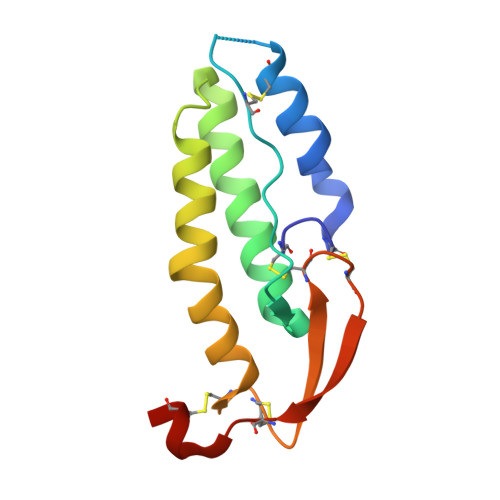Human sperm TMEM95 binds eggs and facilitates membrane fusion.
Tang, S., Lu, Y., Skinner, W.M., Sanyal, M., Lishko, P.V., Ikawa, M., Kim, P.S.(2022) Proc Natl Acad Sci U S A 119: e2207805119-e2207805119
- PubMed: 36161911
- DOI: https://doi.org/10.1073/pnas.2207805119
- Primary Citation of Related Structures:
7UX0 - PubMed Abstract:
Tmem95 encodes a sperm acrosomal membrane protein, whose knockout has a male-specific sterility phenotype in mice. Tmem95 knockout murine sperm can bind to, but do not fuse with, eggs. How TMEM95 plays a role in membrane fusion of sperm and eggs has remained elusive. Here, we utilize a sperm penetration assay as a model system to investigate the function of human TMEM95. We show that human TMEM95 binds to hamster egg membranes, providing evidence for a TMEM95 receptor on eggs. Using X-ray crystallography, we reveal an evolutionarily conserved, positively charged region of TMEM95 as a putative receptor-binding surface. Amino acid substitutions within this region of TMEM95 ablate egg-binding activity. We identify monoclonal antibodies against TMEM95 that reduce the number of human sperm fused with hamster eggs in sperm penetration assays. Strikingly, these antibodies do not block binding of sperm to eggs. Taken together, these results provide strong evidence for a specific, receptor-mediated interaction of sperm TMEM95 with eggs and suggest that this interaction may have a role in facilitating membrane fusion during fertilization.
- Department of Biochemistry, Stanford University School of Medicine, Stanford, CA 94305.
Organizational Affiliation:

















